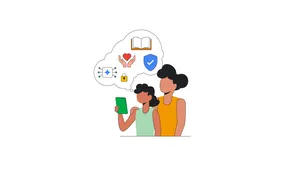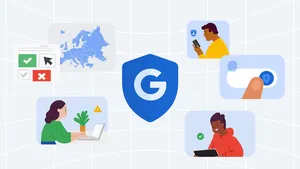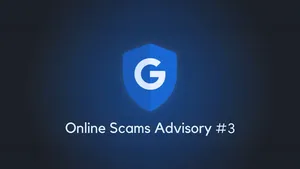How we’re helping kids and families safely learn, grow and play online
More kids and teens are coming online than ever before and are using and owning devices at younger ages. Which is why we design experiences and content to help kids, teens and families safely learn, grow and play across products and devices. With this, we know that each family’s relationship with technology is unique and we provide tools and guidance that offer flexibility to choose the experiences that are right for them. And we’ve built default protections that create safer, age-appropriate experiences across the board.
Today, we’re sharing more about our latest features and tools for kids, teens and families.
Investing in and promoting high-quality, enriching content
We built YouTube Kids to create a safer environment for kids to explore their interests, where the content meets a higher bar for both enrichment and age-appropriateness. To better support this goal, we partnered with third-party experts in fields like child development, child safety, emerging media, and digital wellbeing to create a set of quality principles outlining best practices for creators to follow on YouTube Kids. Our systems promote the content that follows these principles. We are proud to share that since we began to incorporate our quality principles into YouTube Kids recommendations, viewership of high quality content has increased by over 45% in the app.
Similarly, on Google Play, we have expanded the types of apps that are eligible for our Teacher Approved program to give families even more choices for safe, educational content. Every app must meet strict standards outlining age-appropriateness, quality of experience, enrichment and security and data requirements and is reviewed and rated by teachers and child development specialists. If an app is approved by the experts, it is shown on our Kids Tab in the Play store.
Helping families manage their use of technology
We’ve long enabled parents to supervise their children’s activity online with the ability to set screen time limits for each device or for specific apps, set content restrictions and manage app data permissions. Recently, we introduced additional tools and features that offer even more support across our products.
This October, on Family Link, we introduced “Today Only” screen time settings that override general settings for one day, like when taking a family road trip. We’ve also expanded the Location tab where parents can see all of their children on the same map with their device location. Now, parents can also turn on notifications to be alerted when their child arrives at or leaves a specific destination like school or sports practice.
Across Google TV and Assistant, we announced several new features, including parent-managed watchlists on kids profiles on Google TV, where parents can create a “must-watch” list for their kids so that the next time they are watching TV, the watchlist will automatically populate on their profile’s home screen. Similarly, when using Assistant, parents can modify media settings to enable or disable certain functionality like phone calls, set up downtime for their kids and choose the music and video providers (like YouTube and YouTube Kids) they can access. Kids will only be able to explore content from those pre-selected providers.
Default settings and reminders to protect children online
When it comes to protecting kids and families online, our default settings for engagement, content and how data is used help provide a safer, privacy preserving experience. These include the following existing and new settings and reminders for kids and teens:
- Play: Apps that include children in their target audience are required to meet a higher bar for how they use and disclose data they collect under our Families Policy. In the coming weeks, these apps will have the option to include a special badge in their Play Data safety section to let users know they follow our policies, helping parents make more informed decisions about the apps that are best for their families.
- Search: SafeSearch, which helps filter out explicit results when enabled, is on by default for all signed-in users under 18. We also provide minors control over their digital footprint — anyone under the age of 18 or their parent or guardian, can request the removal of their images from Google Image results.
- YouTube: For teens who aren’t set up with a supervised experience on YouTube autoplay is disabled, and bedtime and break reminders are on by default. Parents of pre-teens and teens can also set up a supervised experience with content settings and wellbeing features.
- Ads: We prevent age-sensitive ad categories and block ad targeting based on the age, gender, or interests of people under 18.
- Location: Location Sharing is off by default for all users and we’ve limited the amount of time over which a user can share their location. Location History is also not stored for known users under the age of 18.
Collaborating with regulators and experts around the world
Globally, governments are exploring various regulations that aim to create a safer online environment for kids and families. Safety is at the core of everything we do at Google, and we are committed to working with governments, regulators, parents and other stakeholders to deliver safer, age-appropriate experiences while supporting children’s ability to learn and explore online.







